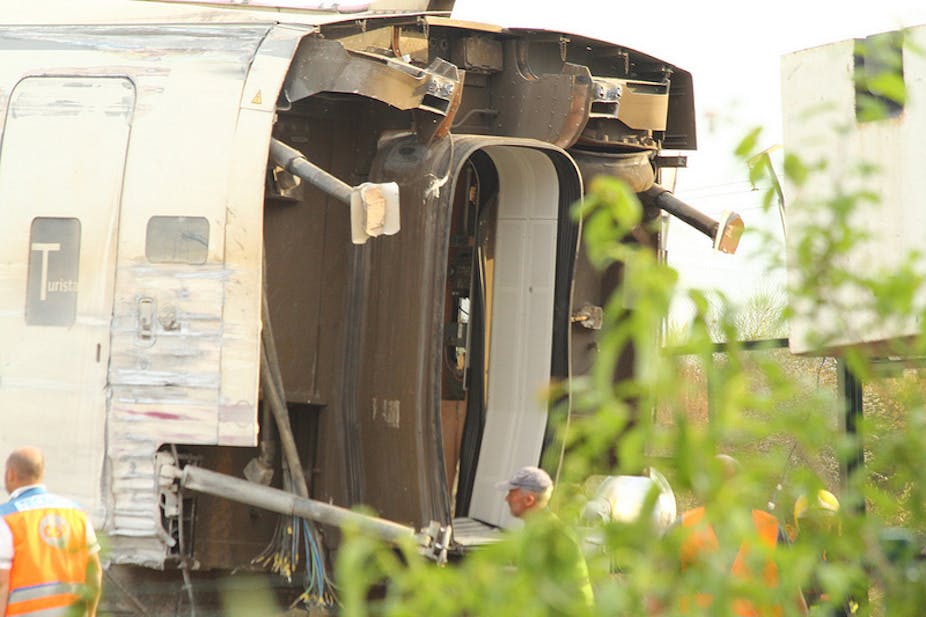A nation that was fiercely proud of its rail system is in mourning, following the worst train disaster seen in Spain for more than 70 years.
A high-speed RENFE train derailed as it approached the northern city of Santiago de Compostela on Wednesday the 24th of July. The death toll at the moment stands at 79.
The section in which the train derailed has an 80km/h speed limit, but the train reportedly approached the curve at an estimated 190km/h, which is more than double the speed limit.
The driver is facing manslaughter charges, but until reports are released an exact cause can not be ascertained. The railway drivers’ union expressed concern that the driver had been formally accused before data from the train’s black box had been analysed.
One of the two systems that the high-speed trains use in Spain is the ERTMS, which is used throughout Europe and is also being touted for the UK. The deployment of ERTMS will enable the creation of a seamless European railway system along with improved safety.
Spain has more ERTMS-equipped routes than any other country in Europe. ERTMS aims at replacing the different national train control and command systems in Europe and is designed to replace conventional trackside signalling systems, with the information being relayed direct to the driver. This system also has the capability of taking over control of the train if the driver appears to be going too fast.
Initial reports suggest that the wayside block system along the entire line is based on ERTMS Level 1, while the final section near Santiago, where the line joins the conventional railway, is fitted with the national Asfa system, which is an automatic brake-and-signal warning system designed to restrict speeds only at associated signals.
The accident occurred in the transition section between ERTMS, and the standard Spanish Asfa system used on the conventional network. Santiago is one of dozens of ERTMS-Asfa transition points on the Spanish network.
ERTMS not at site of crash
This state-of-the-art ERTMS system, which could possibly have prevented the crash was installed on this model of train, but not along the tracks at the dangerous curve outside Santiago de Compostella, where trains need to slow down to 80kmh. Asfa only alerts the driver, but is unable to automatically stop the train.
Juan Jesus Garcia Frailes of the train drivers’ union has called for more investment in safety technology on Spanish rail lines. The introduction of ERTMS across the entire country is in fact something the EU Commission had already decided on in 2005 with the aim of making cross-border train travel easier, but there is a 12-year roll-out period.
For example the highly successful Madrid to Barcelona route uses the Level 2 ERTMS, which can override the driver. The train drivers’ union announced that the tragedy “could have been avoided” if ERTMS had been installed on that stretch of track.
What remains is one of the key questions for investigators: whether this system, which will become the predominant system all over Europe, was doomed to failure at some stage because it has not been fitted along the whole of the train’s route.
In turned, it will be asked how effective the ERTMS can be until is covers all of Europe’s rail networks. There will be a lot of questions in the Spanish parliament and across Europe about the roll out of the ERTMS system.

